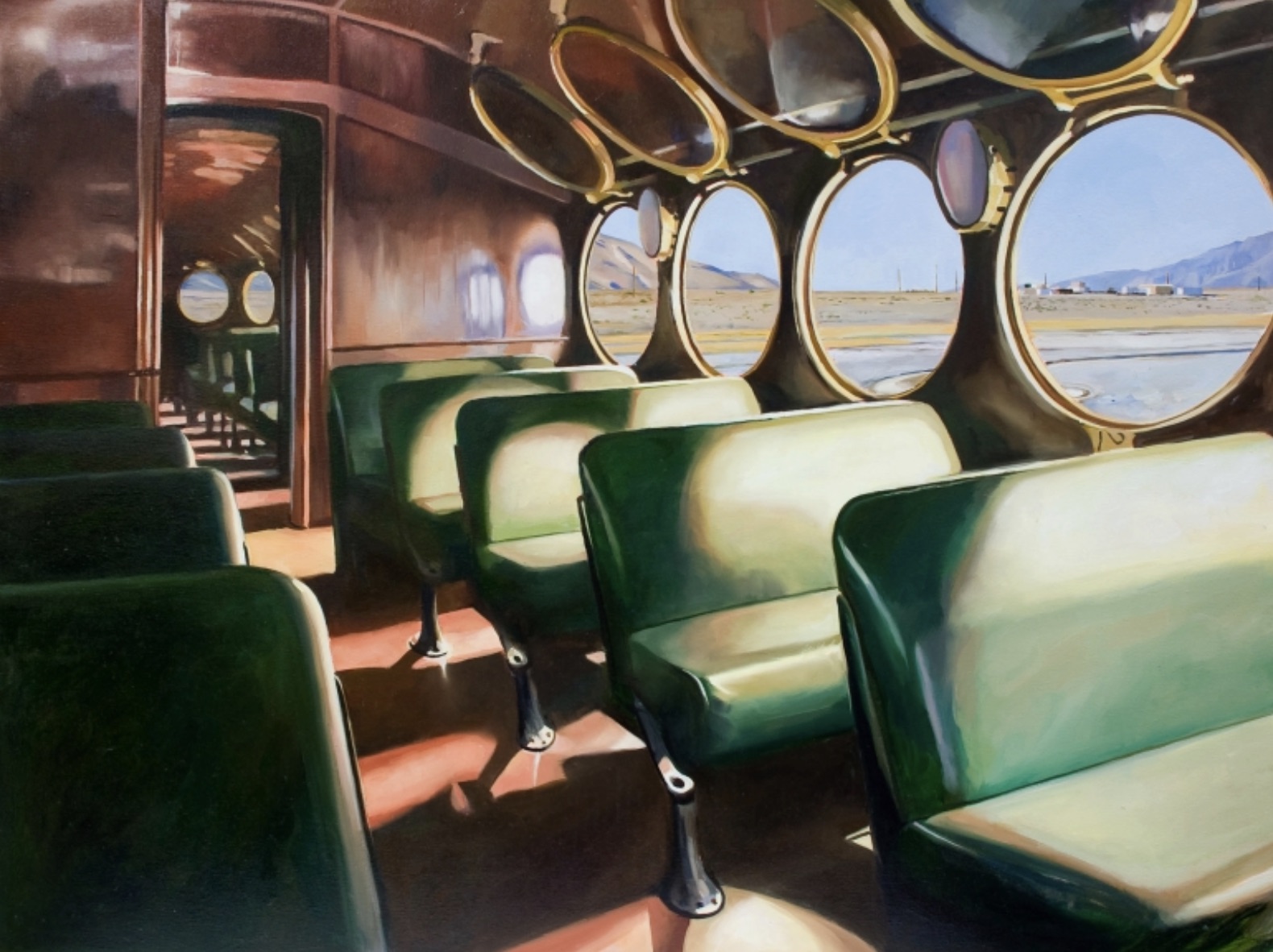Patricia Chidlaw’s “Elsewhere, Paradise”
Santa Barbara Painter’s Latest Exhibit at Sullivan Goss

Any time is the right time to check in on the evolving artistic life of Patricia Chidlaw, one of the finer and more singular painters of note who call Santa Barbara home. But, ironically or not, her work — with its attitudinal and stylistic links to the lonely luster of Edward Hopper’s painting — suddenly feels more timely and emotionally resonant than ever in our current era.
Hopper honed his distinctive style during the period of Spanish Flu, a century hence, and fully came of age as a great American painter in the 1920s, creating melancholic yet warming paeans to corners of America — usually unpeopled. Not surprisingly, Hopper’s art has now become a visual “theme song” of sorts, a source of strained comfort and renewed relevance under Covid-19’s reign of terror and forced self-reflection.
Enter Chidlaw’s latest exhibition at Sullivan Goss, bearing the aptly evocative title Elsewhere, Paradise. A strong, introspective set of mostly 2020-vintage canvases, the show affirms the quiet magnetism and deeply honed character of Chidlaw’s personal language as a painter.
The past certainly informs her iconography and her very way with paint, as seen in such fresh tributes to bygone visions as “Ghost Train” and “Dawn, Sixth St. Viaduct” in the new show. But there is something utterly contemporary, wistful and wise about her observations, not to mention her skilled handling of light, shadow, and composition in conjuring up the muted drama of each canvas.
Chidlaw has a keen way of zooming in on the juxtapositions of things antique and the modern moment in her work, as found in the “Hollywood, Gallaxie” — its protagonist being a deteriorated ’60s-period Ford Galaxie parked downward on a hill. Another winner is “Natural History Museum, Bakersfield,” a strategically composed after-hours scene with a taxidermized lion surveying a bleak street from inside its glass boxed perch.

Fittingly, Elsewhere, Paradise can be viewed in the “socially-distanced” quarters of the downtown gallery, or from the home screen of your choice. Sullivan Goss, it turns out, has long boasted one of the best and most thorough and user-friendly online representations of its wares of any Santa Barbara area art space. Their space is our space, when needed. Of course, that’s a second-best scenario when dealing with paintings on gallery walls, but we’re soldiering on in a time of compromised human experiences.
One of Chidlaw’s memorable early paintings immortalized Frank’s Rice Bowl, a favorite “cheap eats” hangout on lower State Street for many years. In the piece, Chidlaw celebrated the potent ambience of place, leaving the clientele and languid employees out of the picture. Time stands, if not still, then in an era-straddling position. As if in a sly cross-reference to that 1980s painting, Elsewhere, Paradise includes the more brightly lit “Rice Bowl Cafe, Lompoc.”
In her new painting from the Paradise Café, another historic Santa Barbara epicurean landmark, Chidlaw conveys the restaurants personality from a corner of the bar, romanticized via the striped light through window shades. A similarly regional emblem of pride and kitsch is her crepuscular tribute to the famed neon mobile home park sign “Blue Skies,” visible from the 101. Its dim, twilit sky suggests a status just beyond blue skies.
The only literal human presence in the show arrives with a caveat or two: in “Nuria’s Cell Phone,” the subject, with tousled blonde hair and a crimson top, is aloof in a corner and lost in cell phone reflection/distraction, illuminated by its glow, which creates a potentially ominous shadow. Intentionally or not, the painting dismisses the digital overloaded/socially mediated realities of the day by association, amidst views of more timeless, pre-digital scenes and spaces.
In a witty wink of homage to Edward Hoppers famous painting “Nighthawks” (1942), Chidlaw’s “Nighthawks, Carl’s Jr.,” transforms Hopper’s archetypal wee hours diner into a view of a well-lit but utterly empty fast food joint. No customers or burgers in sight. Just figments of imagination and memory on a ghost train, lit up by hope and the power of art.
411: Patricia Chidlaw’s Elsewhere, Paradise at Sullivan Goss Gallery, 11 E. Anapamu St. Runs through July 27.
At the Santa Barbara Independent, our staff continues to cover every aspect of the COVID-19 pandemic. Support the important work we do by making a




You must be logged in to post a comment.